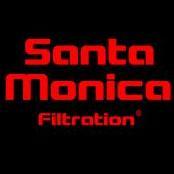Mega Powerful Nitrate and Phosphate Remover - DIY!
-
Topics
-
Latest Update
-
-
2
Decommissioning Sales of 5f Reef Tank
Trying to list down to my best knowledge. Fishes Achilles Tang Purple Tang Orange Shoulder Tang White tail Kole Tang Brown/ Black Scopas (can’t remember the actual breed) Dussumieri Tang Yellow Fox face Magnificent Foxface Chromois (Blue and Black) Corals 3 x Hammer 10x SPS (Don’t have all the names and some are entrusted onto live rock) 1x Pink Gonio 1 x Torch 2 x Candies 1 x Plate 1 x Donut Different types of Zoas A number of others which I cannot recall the name. Equipment Nyos 160 Skimmer 2 x AI HD32 1 x AI HD64 2 x Vortech MP40 Nero 5 (The magnet is rusty) 25W Aqua Ultraviolet UV 5 ft custom tank from Iwarna Aquafarm AI multi light RMS track mounting rail 5 stage RO/ DI filter from Madpetz APEX Neptune Controller PH, ORP, Salinity, Temp probe probe holder Multiple Water Sensors 2 x Water Leak sensor 3 x FMM DOS MXM PM2 LSM 2 x COR20 2 x Energy Bar 6 1 x Energy Bar 832 ATO pump 15” Liquid level sensor AFS feeder Trident (KH, CA, MG) Redsea Reefmat 1200 2 x Reef Dose 4 -
0
For sale: bicolor cleaner wrasse
Wts bicolor cleaner wrasse $18. Appx 2 inches. Bought a few months back, cleans fishes well, very effective specimen telegram me @caulifloweric to deal collection at kembangan -
1
-
2
Decommissioning Sales of 5f Reef Tank
Hi, can I know what fishes and LPS coral u have for sale? Would like to enquiry abt Archille Tang, Hydra light and Skinmer. WhatsApp 97299260
-






Recommended Posts
Join the conversation
You can post now and register later. If you have an account, sign in now to post with your account.